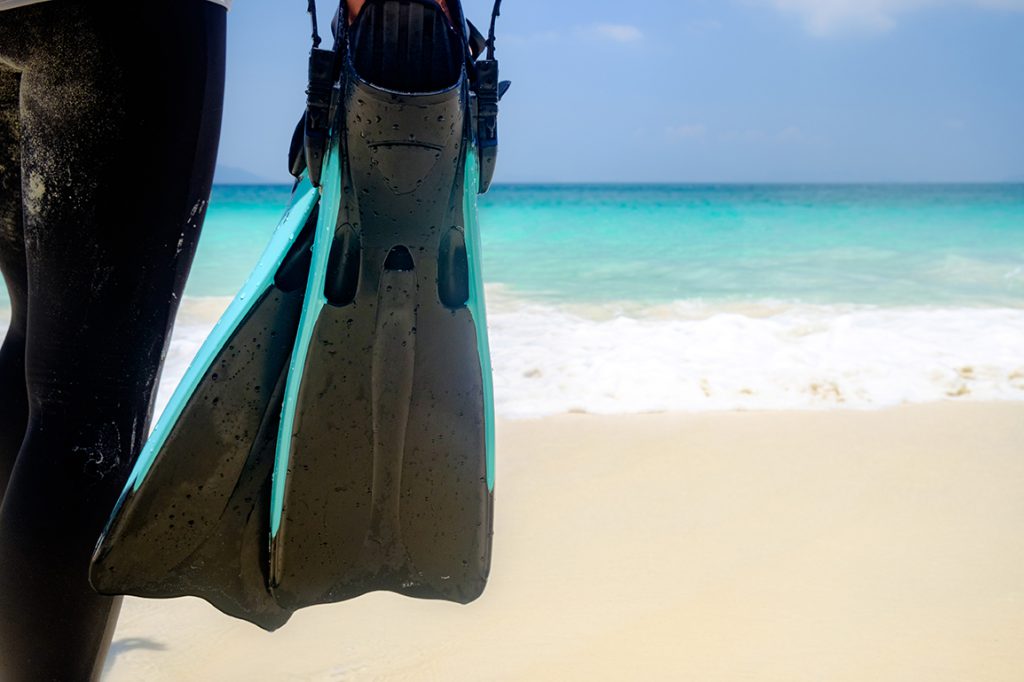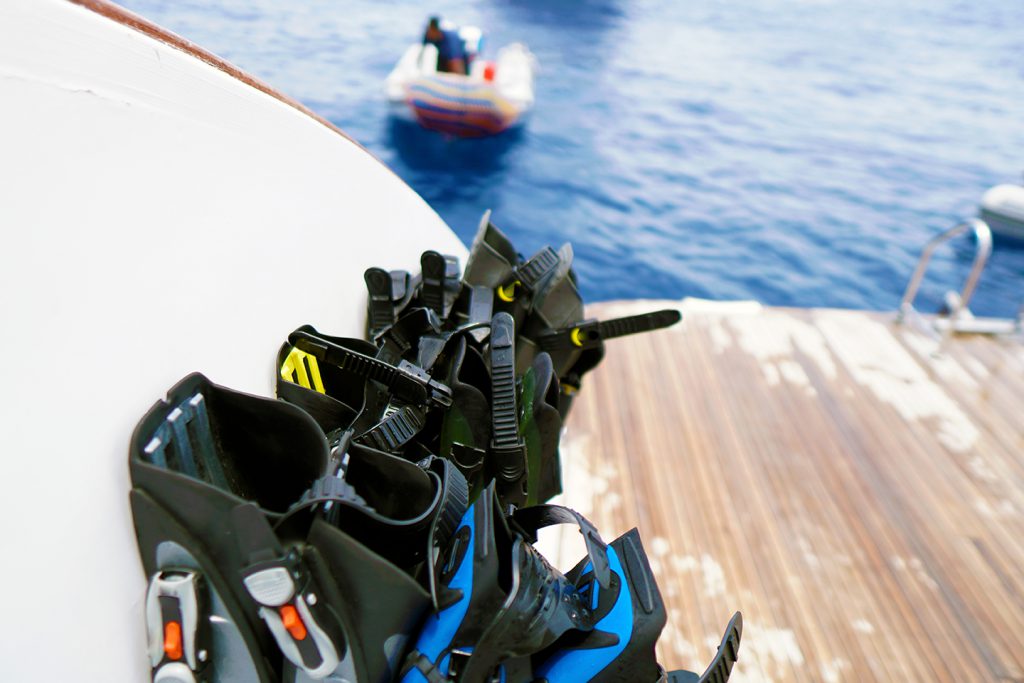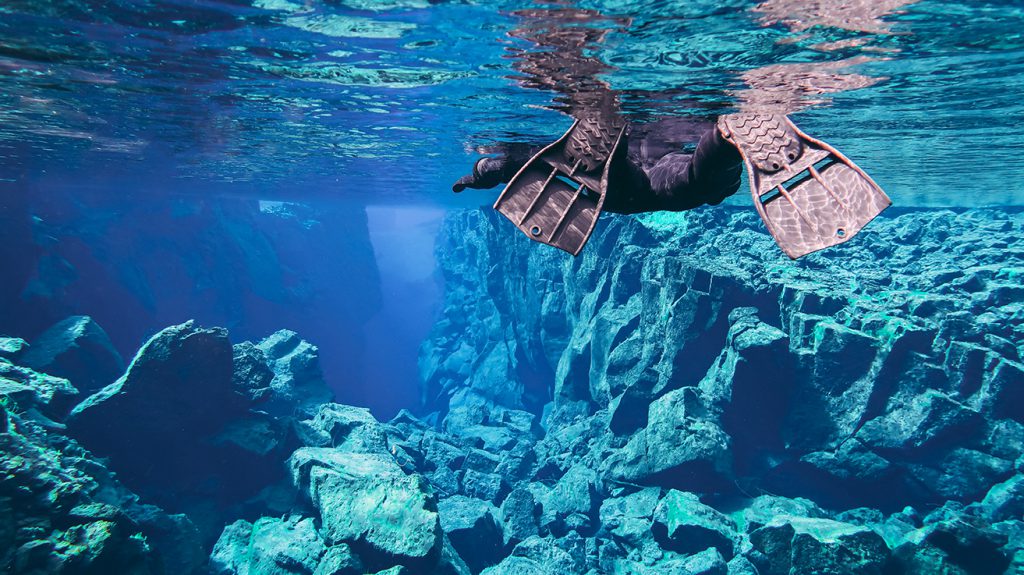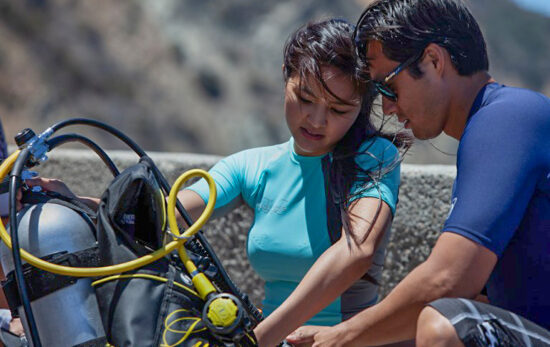Along with a mask and snorkel, diving fins are usually one of the first bits of kit that divers buy, and their purpose is simple: to help you move easily underwater.
The right fins provide a balance of propulsion, control and comfort, while the wrong ones can cause cramps and increase air consumption. With so many styles, finding the perfect match can be overwhelming. Here’s a quick guide…
Foot pockets
Full foot fins are travel-friendly and suited for warmer water. They’re cheaper, lightweight, and don’t require boots, but can’t be adjusted, and give little foot protection.
Open heel fins are more powerful, especially with heavier gear. You’ll need neoprene or drysuit boots, but these offer comfort in colder waters and while walking around on land.

Blades
Paddle fins are simple and generally rigid, which can be harder work but allows good control. Although not the most efficient design, they’re often the cheapest.
Channel fins integrate soft materials to flex into a ‘U’ shape while kicking. This helps channel the water flow for highly effective movement.
Split fins essentially use jet propulsion, and power comes from small, quick flutter kicks. This makes them kinder on weaker legs, but less precise for turning, reversing, or frog kicks.
Hinged fins use a pivot to angle the blade for performance. As with split fins, they are softer to kick with but don’t manoeuvre as easily. Both split and hinged fins are more expensive styles.

Straps and buckles
Basic straps need adjusting (often using a ratchet) each time you wear the fins.
Quick release buckles let you unclip the strap without loosening it, for easier fin removal.
Extending buckles lock the strap closed at the correct adjustment, and open to extend the strap to help take the fins off. These are most prone to breaking, because of the extra parts.
Spring or bungee clips mean you can simply pull the strap over your heel. They are comfortable, quick, and can be fitted to most fins.
Always carry spares, because a broken strap will render your fins useless!

Fitting your diving fins
Start with your shoe size. If you’re buying open heel fins, try them on with your boots as the extra thickness means you may need a bigger fin size. Your heel should stick out a couple of inches or so.
Give your foot a good shake in all directions; there should be no excessive movement, pinching, or rubbing. Watch out for fins that feel too long or heavy; they’ll inevitably give you cramp and poor stability.
Above all, the key to finding the right fin is exploring different styles. Try your buddy’s, or visit a PADI Dive Shop to check out their selection.
Happy finning!




